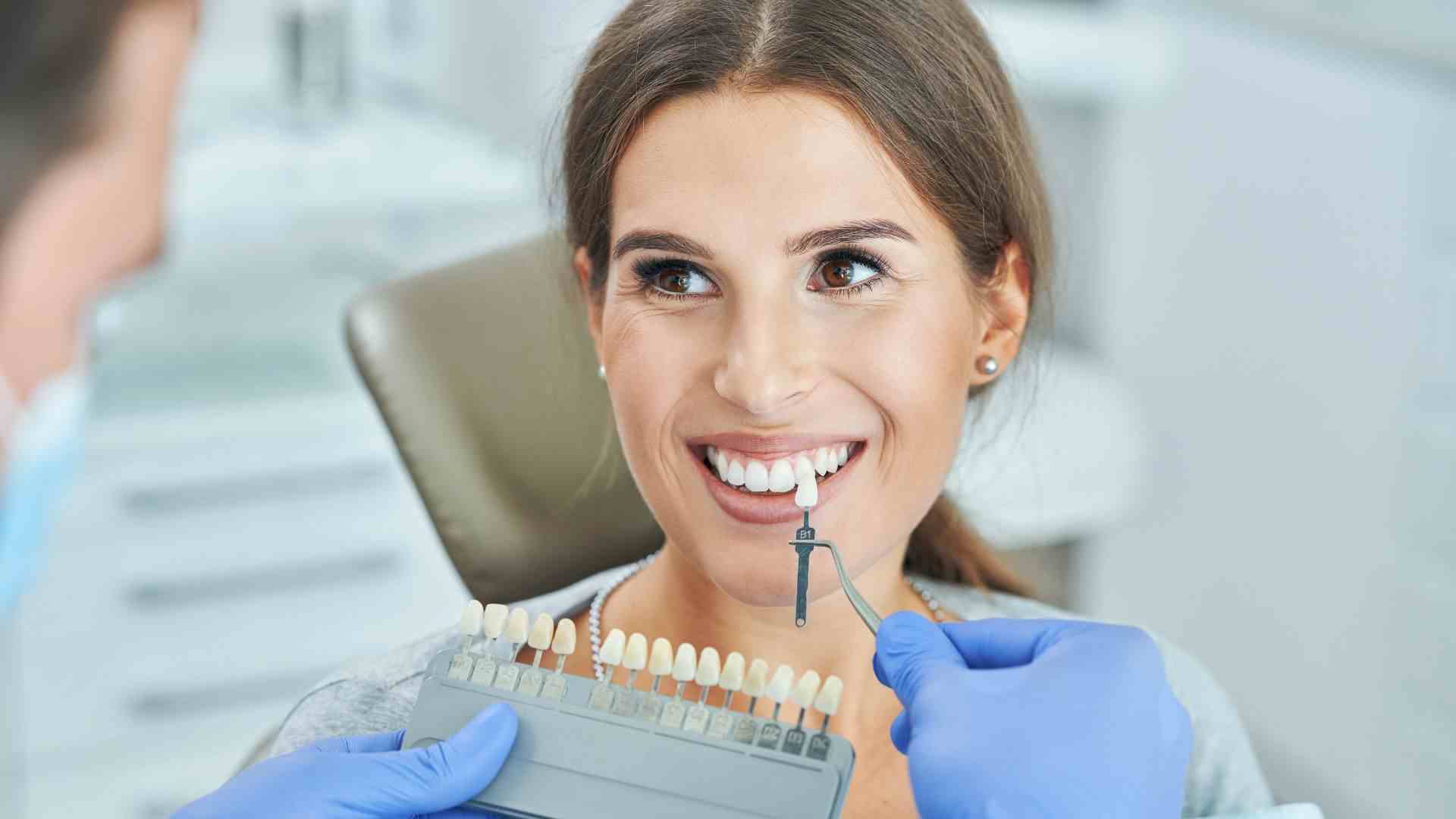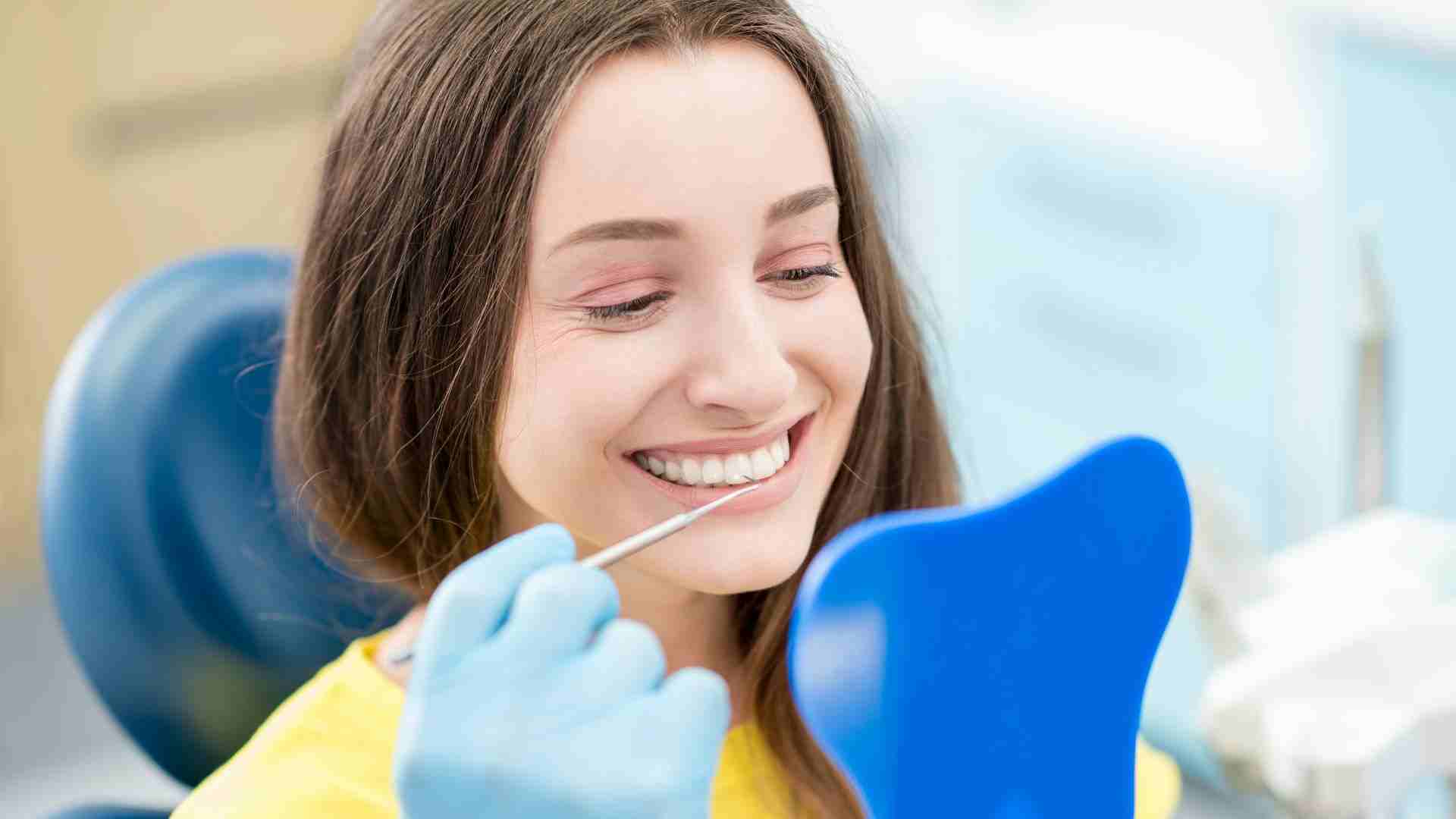Coffee Teeth Stain Removal: A How-To Guide
Removing coffee stains from your teeth involves both at-home care and professional dental treatments. Here's how you can tackle coffee stains effectively:
At-Home Care:
-
Good Oral Hygiene: Brush your teeth at least twice a day with a nano hydroxyapatite toothpaste since nano hydroxyapatite has been proven to whiten teeth. These toothpastes often also contain baking soda to gently eliminate coffee stains. Don't forget to floss daily to remove plaque and food particles between your teeth.
-
Whitening Strips and Gels: Before you try professional teeth whitening, over-the-counter whitening strips and gels can be effective at removing some surface stains from tooth enamel. These products typically contain peroxide-based bleaching agents with natural teeth whitening properties that can lighten tooth color. Make sure to follow the instructions carefully to avoid gum irritation.
-
Rinse After Drinking: Rinse your mouth with water immediately after drinking coffee to minimize and combat coffee stains. This helps wash away coffee particles and reduces their contact time with your teeth. You can also brush after drinking tea and coffee to prevent staining.
Professional Dental Treatments:

-
Professional Cleaning: Regular dental check-ups and cleanings can treat stained teeth more effectively than at-home care. Dental hygienists use specialized tools to clean your teeth thoroughly, including areas that are hard to reach with brushing and flossing alone.
-
Professional Teeth Whitening: For a deeper coffee stain or more dramatic whitening results, consider professional whitening treatments offered by dentists. These treatments use stronger bleaching agents and sometimes light or heat to enhance the whitening process. Professional whitening can provide faster and more noticeable results compared to at-home products.
-
Veneers: In cases of severe staining that doesn't respond well to whitening treatments, dental veneers might be an option. Veneers are thin, custom-made shells of tooth-colored materials designed to cover the front surface of teeth, providing a new, stain-free appearance. Your dentist will be able to guide with with personalized advice.
Remember, while seeking to remove coffee stains, it's important to prioritize the health of your teeth and gums. Avoid overusing whitening products or home remedies that can cause tooth and enamel erosion.
In this article, I'll explain the best methods for coffee teeth stain removal and how to prevent coffee stains in the first place.
Can you drink coffee with a straw after teeth whitening?
Drinking coffee with a straw after teeth whitening can help minimize staining on your teeth.
By using a straw, it helps limit the coffee’s contact with your teeth, reducing the risk of staining, especially in the first 24 to 48 hours when your teeth are more porous and prone to discoloration.
Additionally, research indicates that whitening treatments temporarily weaken tooth enamel, making teeth more vulnerable to stains from dark liquids like coffee.
Plus, consuming coffee through a straw can reduce the amount of liquid that touches the front of your teeth, further decreasing staining potential.
However, it's important to note that coffee can still contribute to long-term staining even if consumed through a straw, so it's recommended to rinse your mouth with water afterward.
Moreover, regularly drinking coffee can wear away enamel over time, so limiting consumption is beneficial. After teeth whitening, it's generally advised to avoid coffee for at least a few hours to allow the enamel to re-harden.
6 Ways to Get Rid of Coffee Stains on Your Teeth

While coffee isn't exactly bad for your teeth, it can certainly cause some unwanted side effects like stains.
To get rid of coffee stains on your teeth and potentially brighten your smile, incorporating nano-hydroxyapatite toothpaste into your oral hygiene routine can be an effective strategy.
But that's not all! Let's walk through some of the key tactics you can use to remove tea staining.
Use Nano Hydroxyapatite Toothpaste
While nHA toothpaste is not a bleaching agent like hydrogen peroxide, studies show its ability to remineralize and repair enamel can lead to a brighter appearance of the teeth.
Plus, smoother, healthier enamel reflects light better, which can make your teeth look whiter and reduce the visibility of stains.
Try Whitening Strips

Whitening strips are a popular and effective option for removing teeth stains and achieving a brighter smile. These thin, flexible strips are coated with a whitening gel that typically contains hydrogen peroxide or carbamide peroxide as the active ingredient.
Whitening strips are effective for many people, offering noticeable whitening by several shades. They are particularly good at addressing stains from coffee, tea, wine, and smoking.
Professional Cleaning
Regular visits to the dentist for professional cleanings can remove surface stains more effectively than brushing alone. Dental hygienists use specialized tools and techniques to gently remove plaque and stains, including those caused by tea.
Daily Oral Hygiene

Brush your teeth at least twice a day and floss daily. You should consider using an electric toothbrush with a whitening head to enhance stain removal.
Dietary Adjustments
Limit or avoid foods and beverages known to stain teeth, and consume them in moderation. Then, when you do dine with coffee or tea, you can rinse out your mouth with water to remove staining compounds or brush your teeth afterward.
Whitening Treatments

For more stubborn stains, consult with your dentist about professional whitening treatments. These treatments can offer more dramatic results than over-the-counter products.
How to Avoid Coffee Stains on Your Teeth

Avoiding tea and coffee stains on your teeth involves a few strategic habits that can help maintain a bright smile without having to give up your favorite beverage. Let's walk through some of the key ways to prevent staining.
Rinse with Water

After enjoying a cup of tea, make sure to rinse your mouth with water. This simple step helps wash away tannins and pigments that cause staining before they have a chance to settle on your teeth.
Use a Straw
When possible, drink tea through a straw, especially if you prefer iced tea. This method reduces the amount of liquid that comes in contact with the visible front surfaces of your teeth.
Add Milk

Research suggests that adding milk to your tea, and potentially coffee, may reduce its staining potential. This may be because the proteins in milk inhibit the tannins in tea and prevent stains.
Maintain Good Oral Hygiene
Brush your teeth at least twice a day with nano hydroxyapatite toothpaste and use expandable dental floss daily. You can also consider using a whitening toothpaste, though some dental professional consider it bad as it can erode away enamel.
Thankfully, regularly brushing with nano hydroxyapatite toothpaste helps remove surface stains and prevents them from setting in without causing damage. Plus, remineralizing toothpaste can prevent tooth decay which can also cause the appearance of tooth stains.
Professional Dental Cleanings

Of course, it's important to see a dentist regularly for a professional cleaning. Your dentist or hygienist can remove surface stains more effectively than at-home care and can offer advice or teeth whitening treatments to further reduce staining.
You can also consider using natural whitening strips at home as needed for a quick, effective way to remove stains from tea.
Frequently Asked Questions
Can you remove coffee stains from your teeth?
Yes, coffee stains on teeth can often be removed or significantly reduced. This can be achieved through various methods, including professional dental cleaning, which effectively removes surface stains. At-home oral hygiene practices, such as brushing with nano hydroxyapatite toothpaste and using mouthwash, can also help lighten stains over time. For more stubborn stains, professional whitening treatments offered by dentists can provide more dramatic results. Additionally, limiting coffee intake and rinsing the mouth with water after drinking coffee can prevent further staining.
Are coffee stains on teeth reversible?
Yes, coffee stains on teeth are often reversible. With proper dental care and maintenance, such as regular brushing, flossing, and professional cleanings, surface stains caused by coffee can be removed. Additionally, professional teeth whitening treatments can effectively lighten or eliminate more stubborn stains, restoring the natural color of your teeth. However, it's essential to address staining promptly to prevent it from becoming more permanent or difficult to remove over time.
Are coffee stains permanent?
Coffee stains on teeth are not usually permanent and can often be removed or significantly lightened with proper dental care. Regular brushing, especially with nano hydroxyapatite toothpaste, and flossing can help reduce surface stains. Professional dental cleanings are very effective at removing coffee stains, as dental hygienists use specialized tools and techniques to clean your teeth thoroughly. Additionally, professional teeth whitening procedures can address more stubborn stains, making your teeth several shades lighter. However, if the staining is left untreated for a long period, it can lead to more permanent discoloration, which might require more intensive treatments to correct.
What removes old coffee stains?
Removing old coffee stains from teeth often requires a combination of professional dental treatments and at-home care. Professional teeth whitening or dental cleaning by a dentist can effectively remove deep-set coffee stains. Using toothpaste that contains whitening agents or ingredients like hydrogen peroxide and baking soda can also help lighten stains over time. Additionally, products containing nano-hydroxyapatite are known for their remineralizing properties and can aid in reducing the appearance of stains. For at-home maintenance, consider using whitening strips, such as PRISM Whitening Strips, which are designed to remove tough stains and restore teeth to a brighter shade.
How to get coffee stains off your teeth?
To combat coffee stains on your teeth, start with a consistent oral hygiene routine, including brushing with a nano hydroxyapatite toothpaste, which helps strengthen enamel and lift stains. Additionally, incorporating PRISM Whitening Strips into your dental care routine can target and remove coffee stains effectively. Regular dental check-ups and cleanings are also essential for addressing persistent stains. Finally, reducing coffee consumption and rinsing with water after drinking can prevent future staining.
Does drinking coffee through a straw stop staining?
To remove coffee stains from your teeth, regularly brush with nano hydroxyapatite toothpaste. Plus, using a straw while drinking coffee can also reduce contact with your teeth, preventing future staining. Lastly, professional cleanings by a dentist can help remove deeper stains that brushing alone cannot eliminate.
How to drink coffee while whitening teeth?
To drink coffee while whitening your teeth, use a straw to minimize the coffee’s contact with your teeth and reduce the risk of staining. Additionally, rinse your mouth with water after drinking coffee to help wash away any residual liquid. It’s also a good idea to maintain a regular brushing routine with a fluoride-free or whitening toothpaste, and limit your coffee intake to protect your enamel.






















